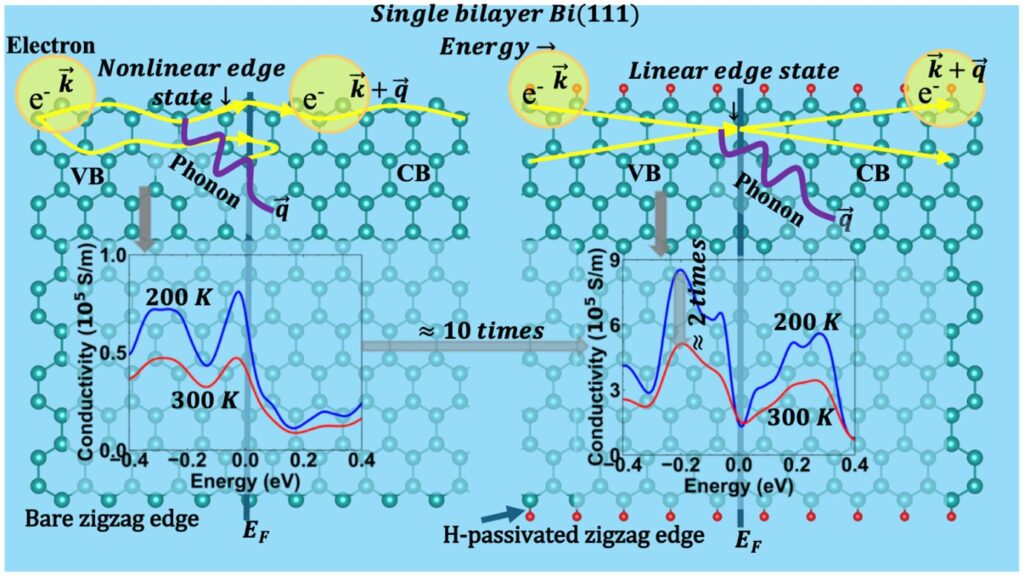Topological insulators raise the exciting hope of realizing lossless energy transport, which is true at ultralow temperatures. However, topological insulators fail to maintain this lossless ‘magic’ at room temperature.
Researchers from Monash University, part of the FLEET Center, have uncovered new insights into the efficiency of topological insulators, illuminating the significant disparity between their magic lossless energy transport at ultralow temperatures and the detrimental issues that arise at room temperature.
The study, which was published in Nanoscale, investigates why topological insulators face serious challenges in maintaining their feature in a practical working environment, particularly by the role of electron-phonon interactions.
Topological insulators, particularly two-dimensional (2D) topological insulators, are well-known for their unique feature of conducting electricity through the boundary/edge while the bulk surface remains electrically insulating.
This unique feature allows one-way carrier transport without backscattering, with the resulting negligible scattering-induced electrical resistance giving rise to expectations of dissipationless carrier transport.
Indeed, at ultralow temperatures, these topological insulators often exhibit dissipationless carrier transport, lining up with the expectation. However, sustaining this feature faces a serious challenge when the temperatures rise towards room temperature, where phonons (quanta of lattice vibrations) come into play with carriers.
The role of electron-phonon interactions
This study delivers a thorough analysis of interplay between carrier and phonon, and energy transport in the 2D topological insulator under different temperatures.
The interplay between electron and phonon (i.e., electron-phonon interactions) plays a crucial role in the significant increase in electrical resistance observed.
Theoretical modeling revealed electron-phonon scattering to be a significant source of backscattering at the topological edge states, with the strength of interactions strongly correlated to dispersion of the electronic edge states.
The interactions increase significantly with temperature, and are much stronger at the nonlinearly dispersed edge states of native edges compared to the linearly dispersed edge states of passivated edges, causing a significant energy dissipation in the temperature range of 200–400 K.
This study therefore illuminates the divergence between the performance at ultralow temperature and at practical, operating room temperature.
“As we considered both linear and nonlinear edge dispersions in this study, our results can be applicable to a diverse range of topological insulators,” said Enamul Haque, lead author of the study.
Improved fundamental understanding of the role of electron-phonon scattering at the edges of 2D topological insulators is considered vital to progressing the technology of 2D topological insulator-based future electronics. However, previous work has focused largely on surface states of 3D topological insulators and insulating surfaces of 2D topological insulators.
“Our findings could play a crucial role for advancing the applications of topological insulators in practical electronic devices,” says Haque.
The understanding from this study can guide the search for new quantum materials or how to overcome the existing limitations. By overcoming these issues at room temperature, scientists can advance in realizing the full-potential applications of topological insulators in practical technologies, for example, quantum transistors and quantum devices.
“A clear understanding of electron-phonon interactions in the topological edge states can help develop strong quantum decoherence in qubits, which would potentially enhance the stability and scalability of quantum computers,” said Professor Nikhil Medhekar, lead researcher and FLEET Chief investigator.


